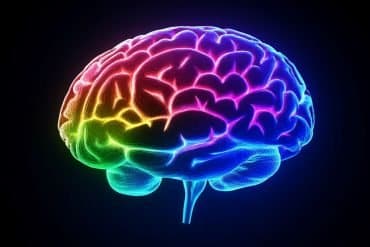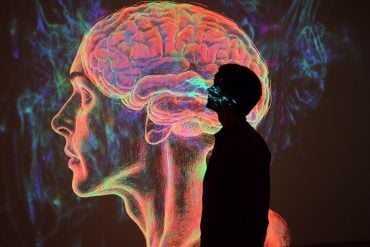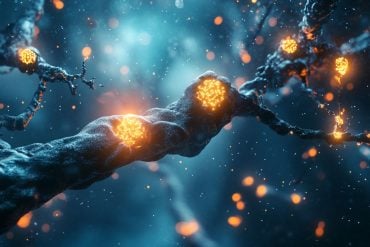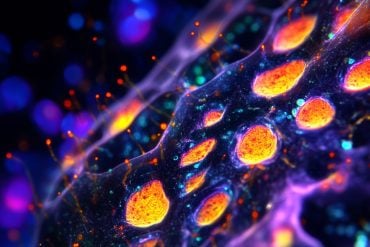Summary: Combining neuroimaging data with machine learning, researchers report musical pleasure depends on a dynamic interplay between prospective and retrospective states of expectation.
Source: Cell Press
Why is it that people find songs such as James Taylor’s “Country Roads,” UB40’s “Red, Red Wine,” or The Beatles’ “Ob-La-Di, Ob-La-Da” so irresistibly enjoyable? In a study reported in the journal Current Biology on November 7, researchers analyze 80,000 chords in 745 classic U.S. Billboard pop songs–including those three–and find that musical pleasure comes from the right combination of uncertainty and surprise.
“It is fascinating that humans can derive pleasure from a piece of music just by how sounds are ordered over time,” says Vincent Cheung of the Max Planck Institute for Human Cognitive and Brain Sciences, Germany. “Songs that we find pleasant are likely those which strike a good balance between knowing what is going to happen next and surprising us with something we did not expect. Understanding how music activates our pleasure system in the brain could explain why listening to music might help us feel better when we are feeling blue.”
Cheung and colleagues including Stefan Koelsch, University of Bergen, Norway, used a machine learning model to mathematically quantify the uncertainty and surprise of 80,000 chords in U.S. Billboard pop songs. To rule out other associations to the songs that listeners might have had, the researchers stripped them of other elements including lyrics and melody, keeping only the chord progressions.
The evidence showed that when individuals were relatively certain about what chord to expect next, they found it pleasant when they were instead surprised (i.e., when their expectations were violated). On the other hand, when individuals were uncertain about what to expect next, they found it pleasant when subsequent chords weren’t surprising.
“Although composers know it intuitively, the process behind how expectancy in music elicits pleasure was still unknown,” Koelsch says. “One important reason was because most studies in the past only looked at the effects of surprise on pleasure but not the uncertainty of the listeners’ predictions.”
Brain imaging studies using functional magnetic resonance imaging (fMRI) found that the experience of musical pleasure was reflected in three brain regions: the amygdala, the hippocampus, and the auditory cortex. Those brain regions play a role in processing emotions, learning and memory, and processing sound, respectively. In contrast, activity in the nucleus accumbens–a brain area that processes reward expectations and had previously been believed to play a role in musical pleasure–only reflected uncertainty.
“In summary,” the researchers write, “we show…that musical pleasure depends on the dynamic interplay between prospective and retrospective states of expectation. Our fundamental ability to predict is therefore an important mechanism through which abstract sound sequences acquire affective meaning and transform into a universal cultural phenomenon that we call ‘music.'”

Based on the new findings, the researchers say that future brain research could consider the combined roles of uncertainty and surprise on humans’ appreciation for other art forms such as dance and film. The findings might also be put to work for enhancing artificial music generation algorithms, aiding composers in writing music, or even predicting musical trends.
Their next step is to look at how information flows across different parts of the brain over time. They want to know why and how it is that people listening to music sometimes get goose bumps. Cheung says: “We think there is great potential in combining computational modeling and brain imaging to further understand not only why we enjoy music, but also what it means to be human.”
Funding: This work was supported by the Max Planck Society, the Croucher Foundation, and a doctoral studentship from the EPSRC and AHRC Centre for Doctoral Training in Media and Arts Technology. The authors declare no competing interests.
Source:
Cell Press
Media Contacts:
Carly Britton – Cell Press
Image Source:
The image is in the public domain.
Original Research: Open access
“Uncertainty and Surprise Jointly Predict Musical Pleasure and Amygdala, Hippocampus, and Auditory Cortex Activity”. Vincent Cheung et al.
Current Biology doi:10.1016/j.cub.2019.09.067.
Abstract
Uncertainty and Surprise Jointly Predict Musical Pleasure and Amygdala, Hippocampus, and Auditory Cortex Activity
Highlights
• Musical pleasure depends on prospective and retrospective states of expectation
• A machine-learning model quantified the uncertainty and surprise of pop song chords
• Chords with low uncertainty and high surprise, and vice versa, evoked high pleasure
• Joint effects of uncertainty and surprise found in the amygdala and auditory cortex
Summary
Listening to music often evokes intense emotions. Recent research suggests that musical pleasure comes from positive reward prediction errors, which arise when what is heard proves to be better than expected. Central to this view is the engagement of the nucleus accumbens—a brain region that processes reward expectations—to pleasurable music and surprising musical events. However, expectancy violations along multiple musical dimensions (e.g., harmony and melody) have failed to implicate the nucleus accumbens, and it is unknown how music reward value is assigned. Whether changes in musical expectancy elicit pleasure has thus remained elusive. Here, we demonstrate that pleasure varies nonlinearly as a function of the listener’s uncertainty when anticipating a musical event, and the surprise it evokes when it deviates from expectations. Taking Western tonal harmony as a model of musical syntax, we used a machine-learning model to mathematically quantify the uncertainty and surprise of 80,000 chords in US Billboard pop songs. Behaviorally, we found that chords elicited high pleasure ratings when they deviated substantially from what the listener had expected (low uncertainty, high surprise) or, conversely, when they conformed to expectations in an uninformative context (high uncertainty, low surprise). Neurally, we found using fMRI that activity in the amygdala, hippocampus, and auditory cortex reflected this interaction, while the nucleus accumbens only reflected uncertainty. These findings challenge current neurocognitive models of music-evoked pleasure and highlight the synergistic interplay between prospective and retrospective states of expectation in the musical experience.






